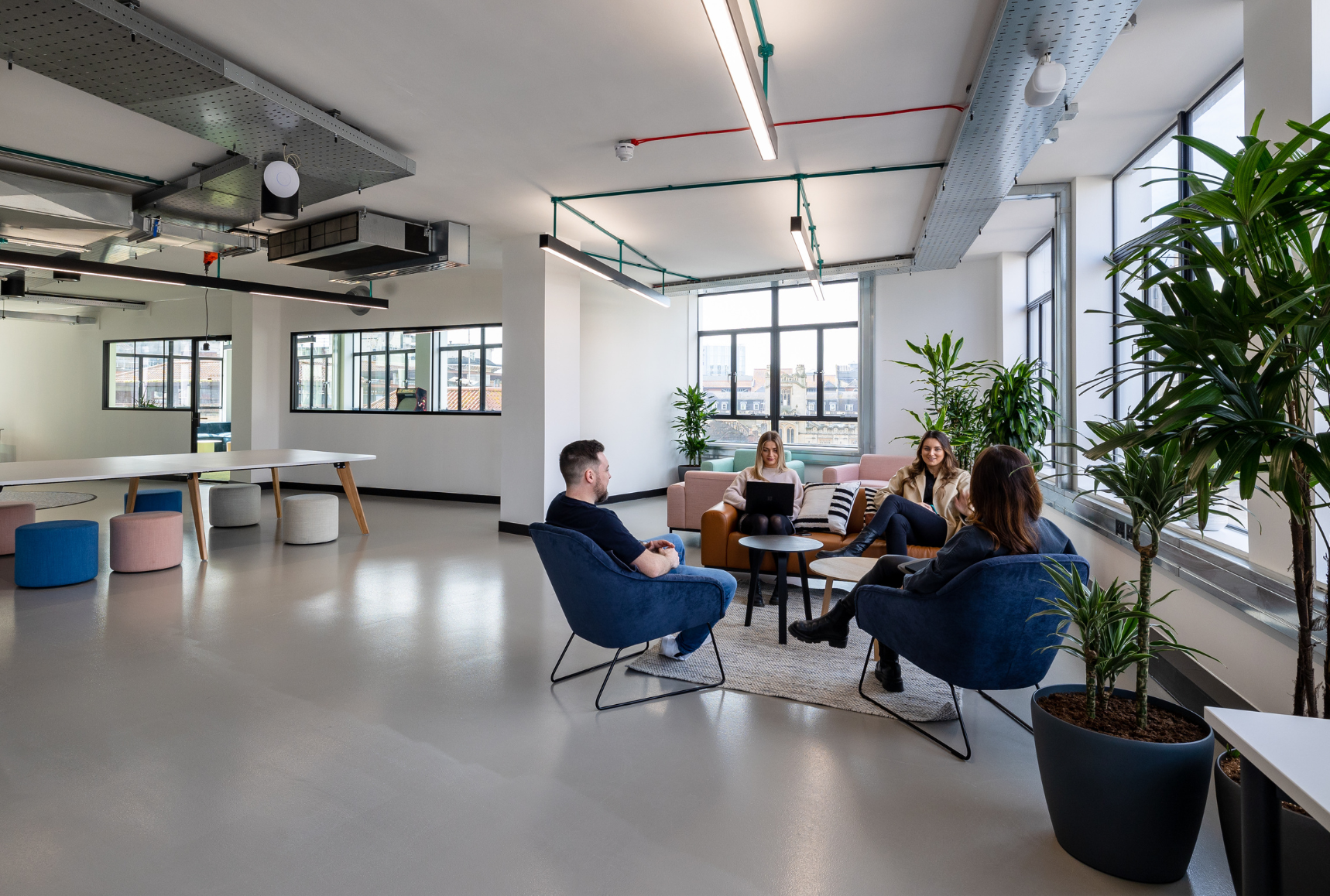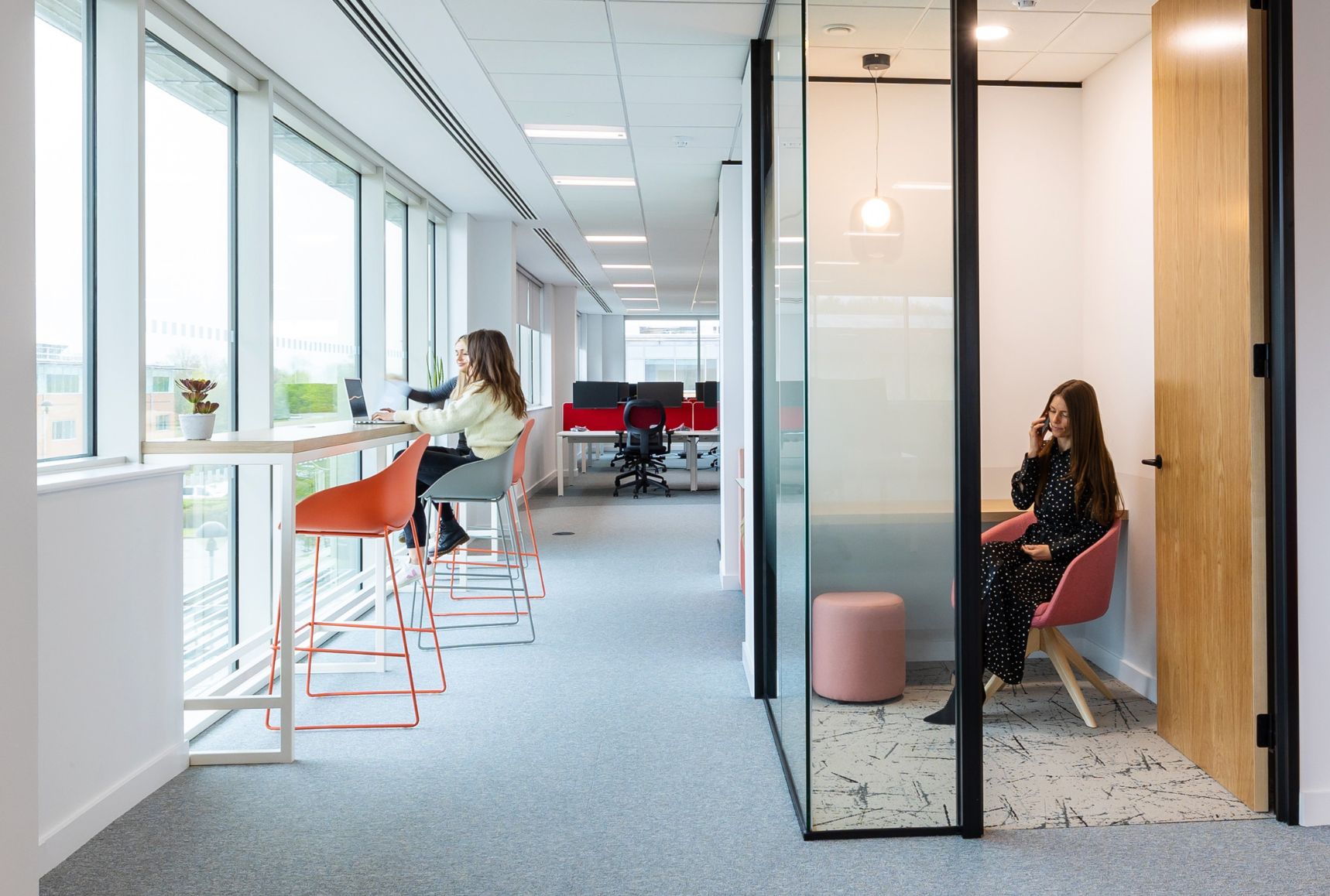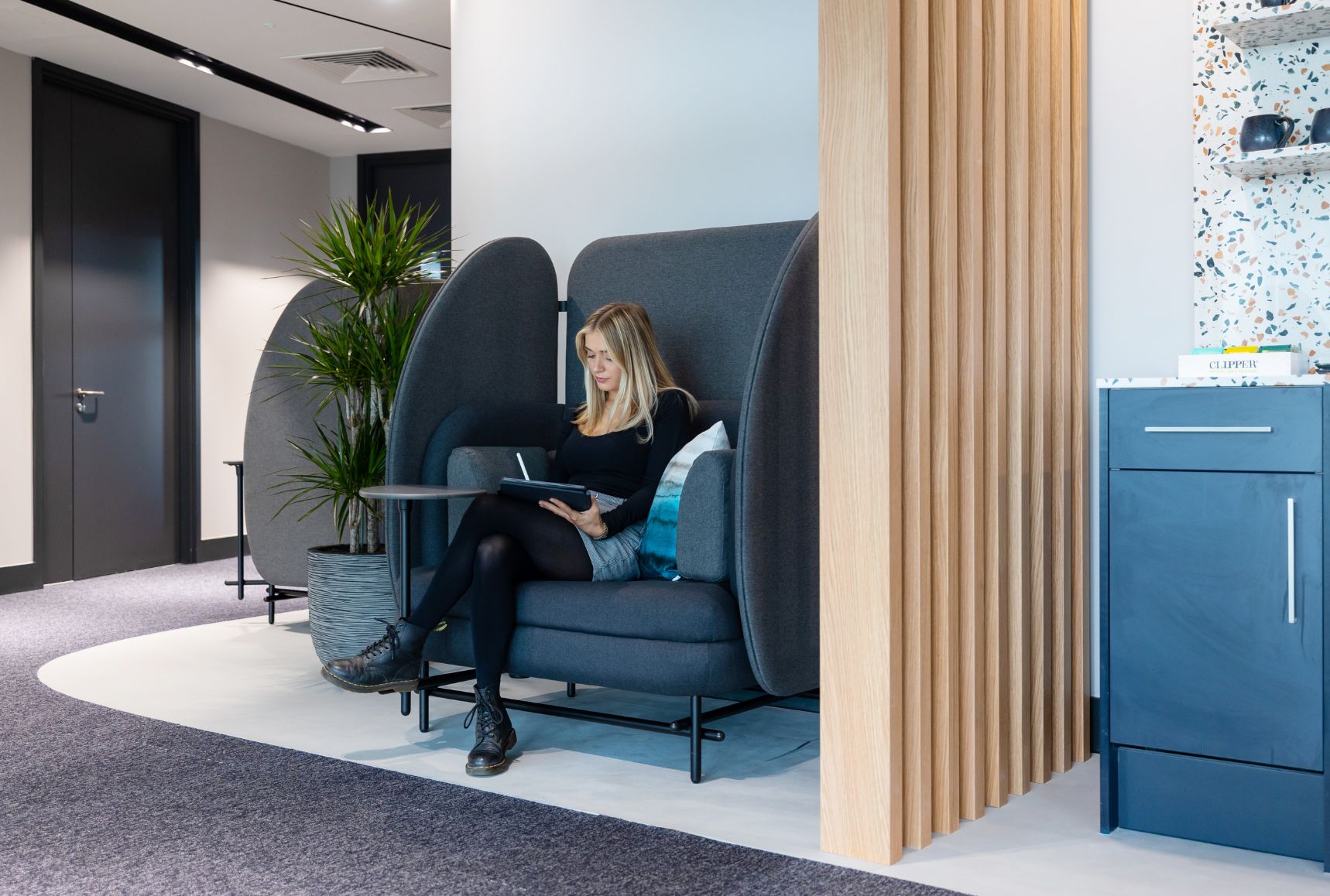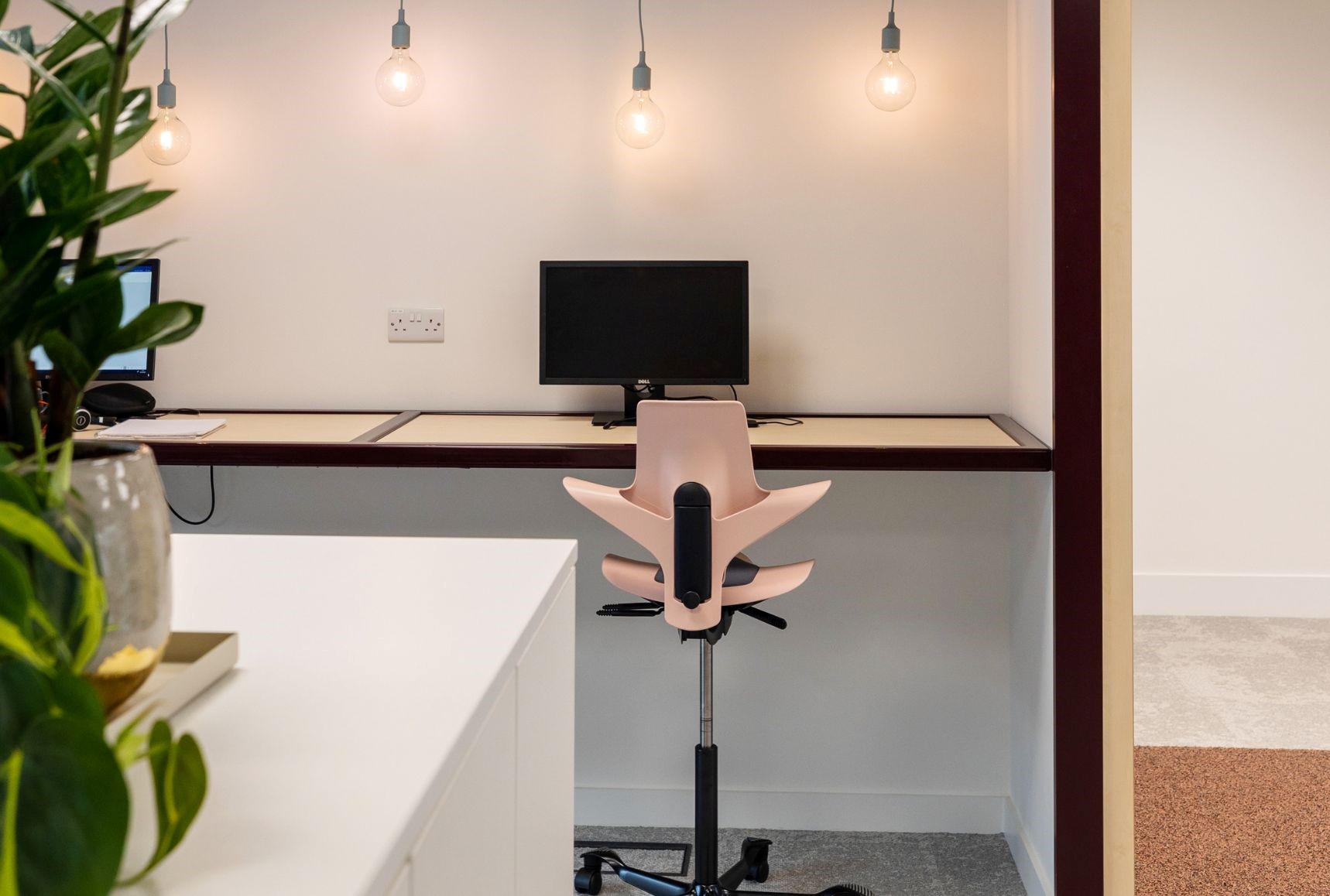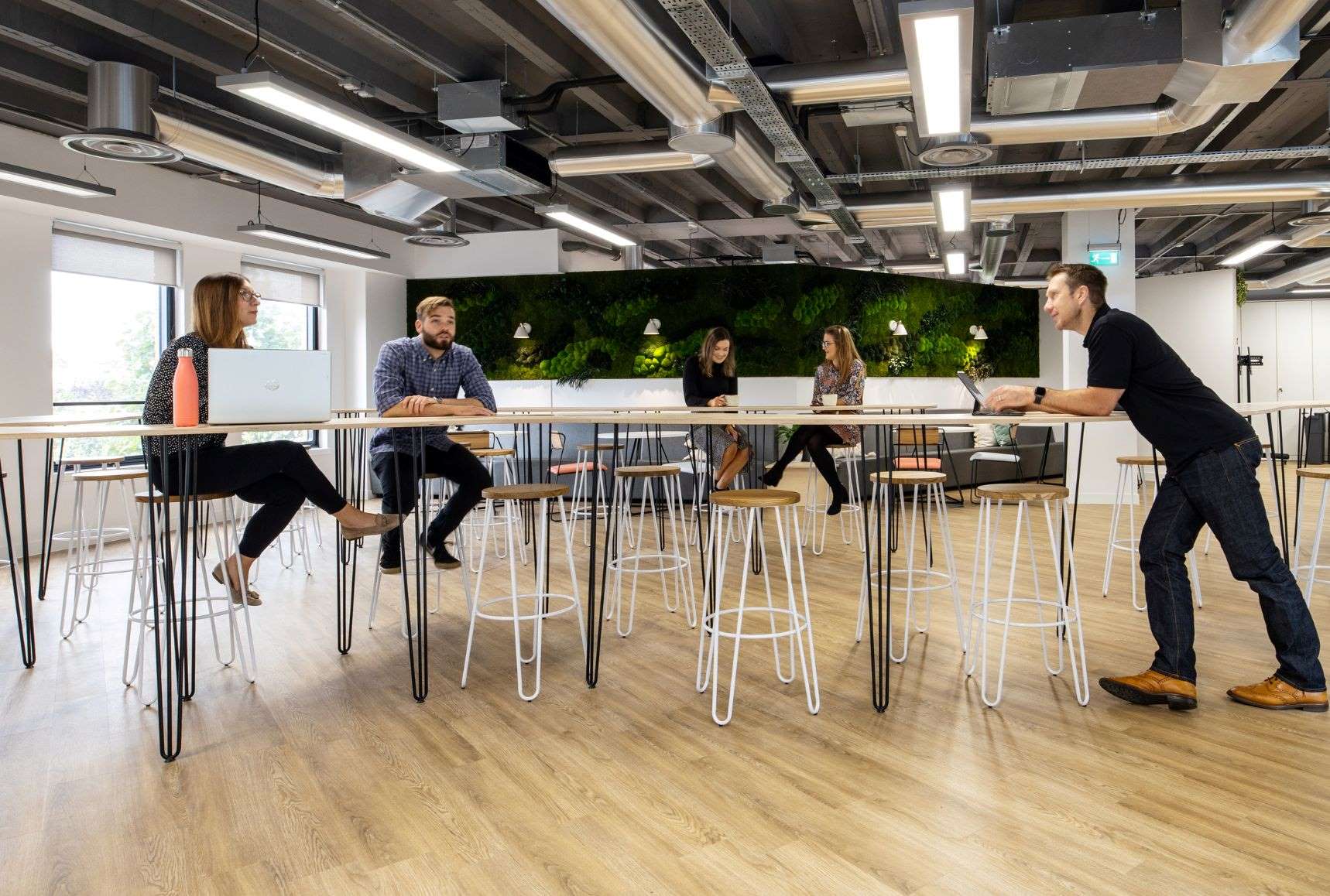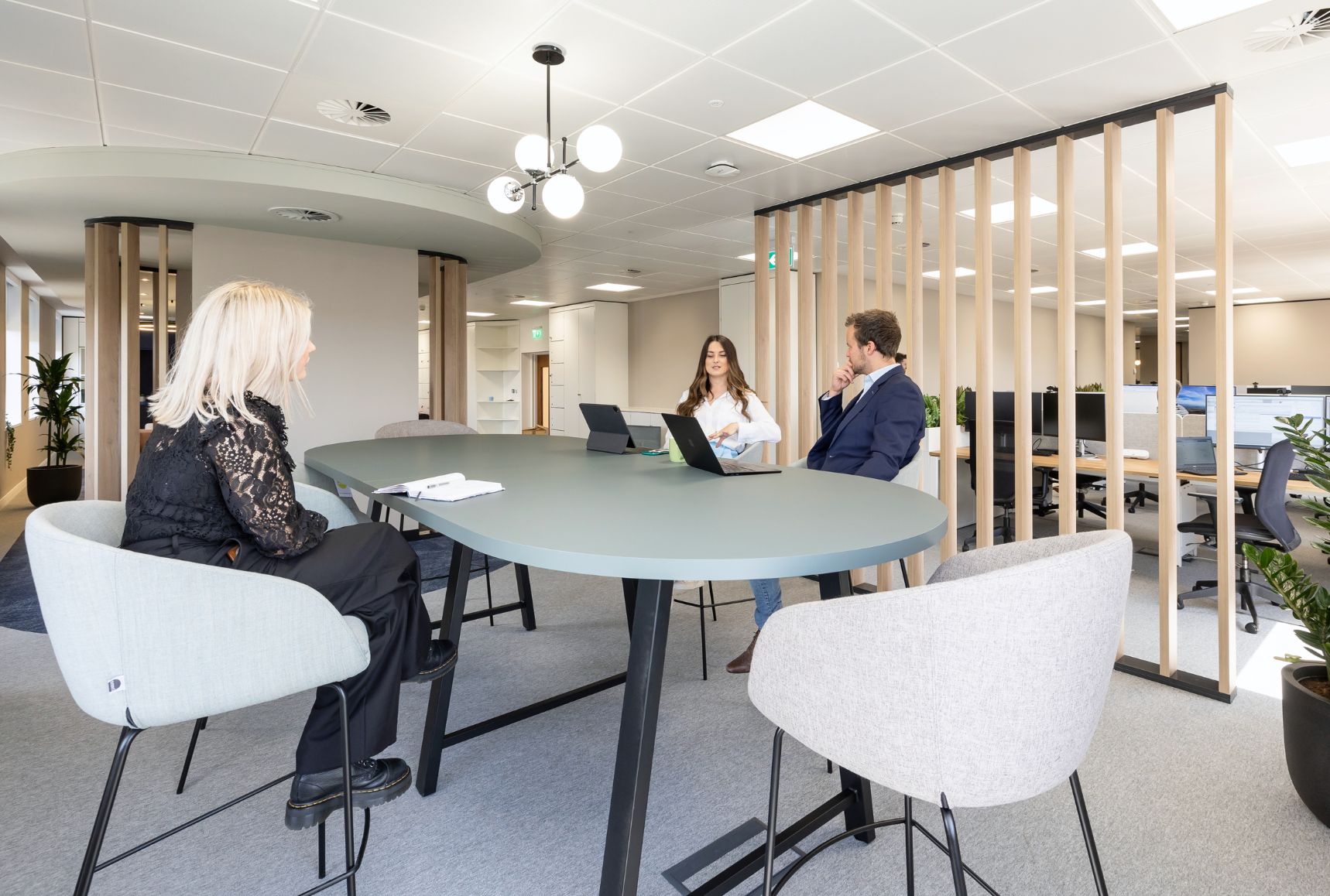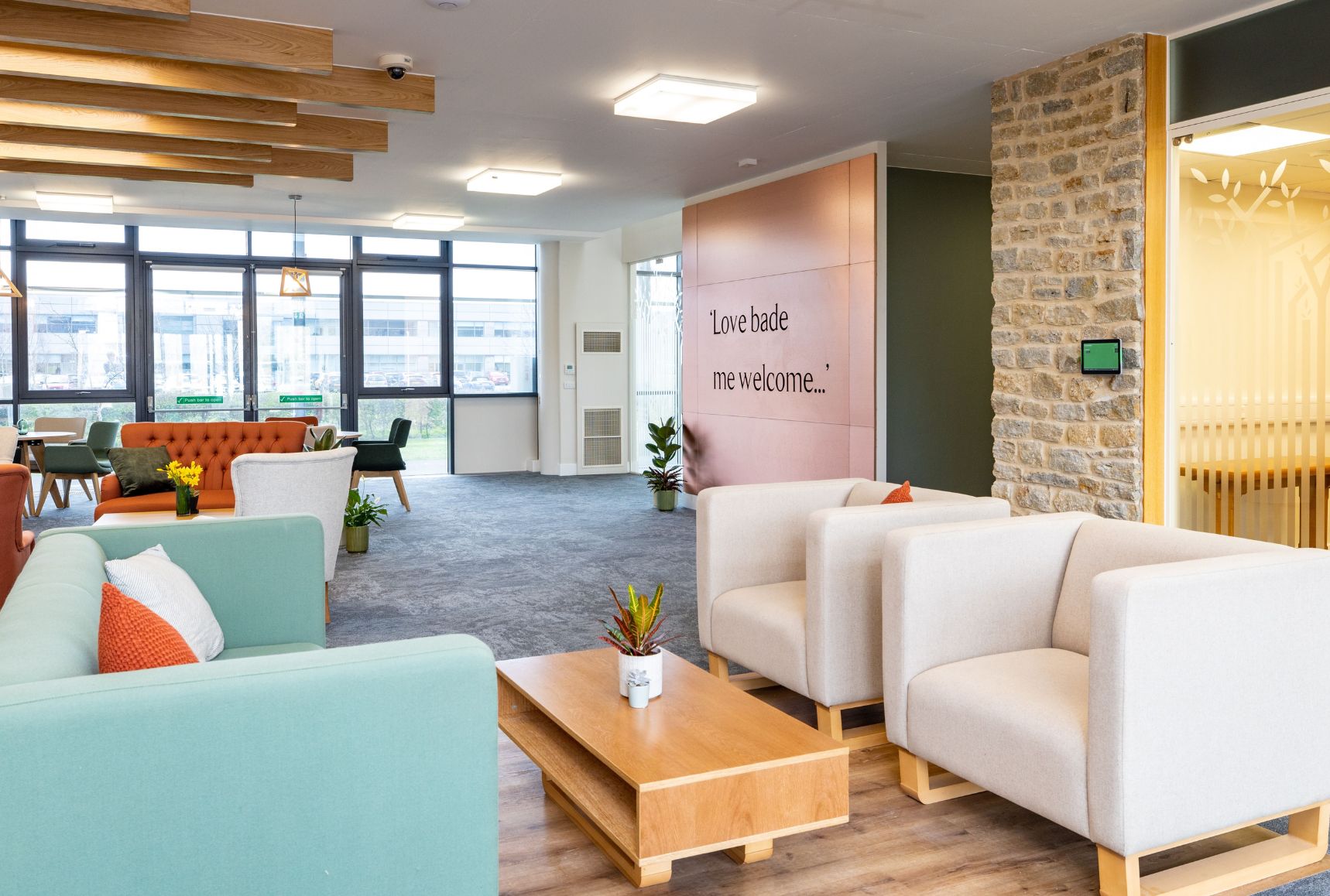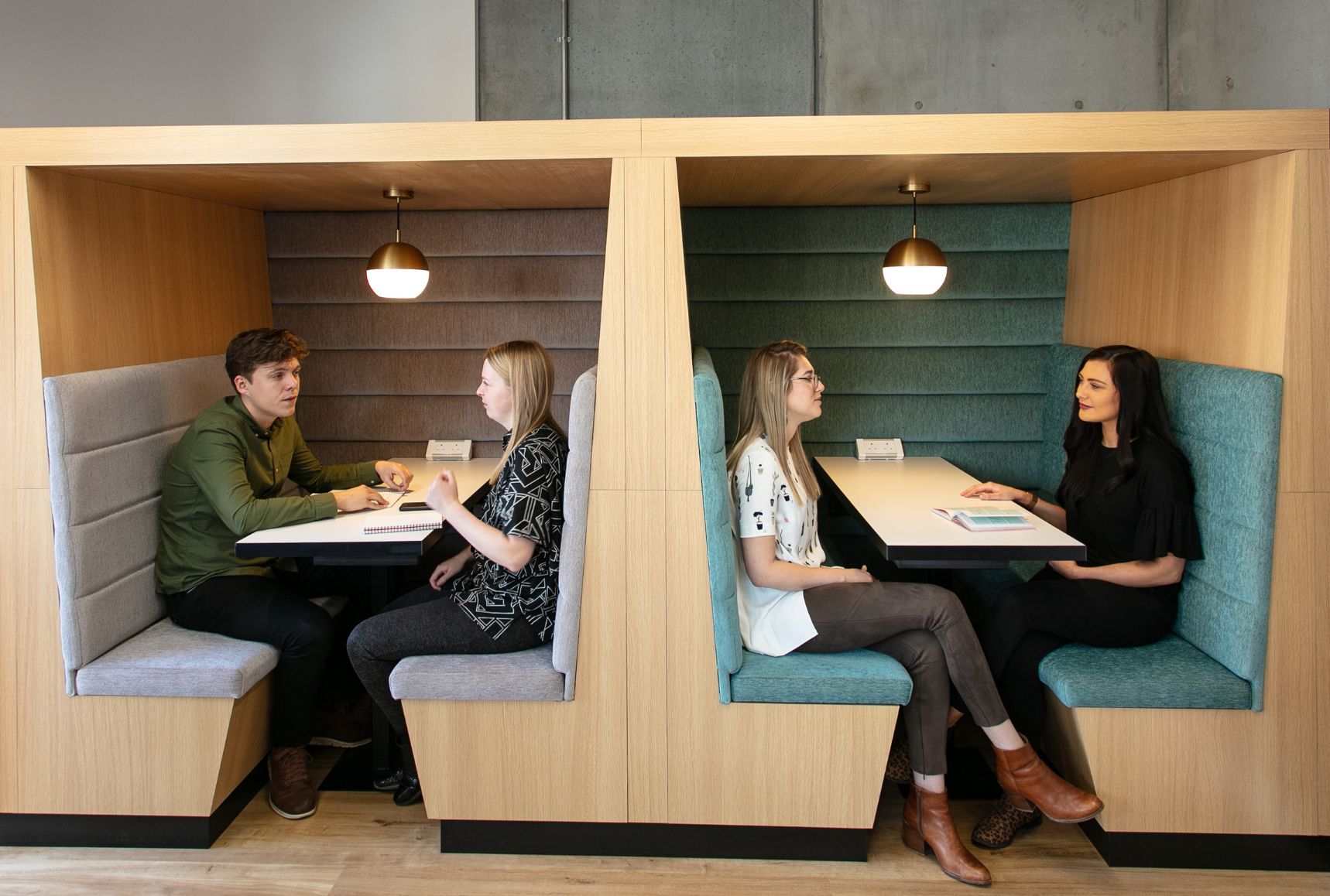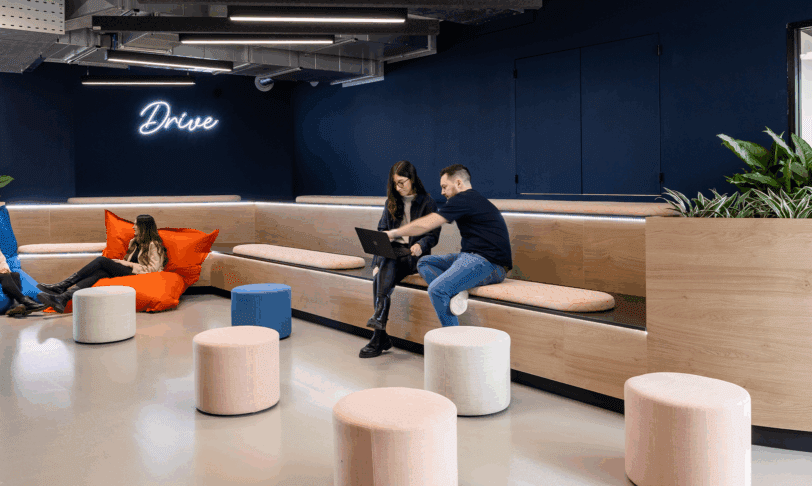What exactly is meant by productivity in the workplace?
If you’re a business owner or leader, you’re undoubtedly familiar with the concept of productivity. While it seems that there’s a universal understanding of what productivity means, if we were all asked to define it we’d get a slew of different responses. Productivity is a multifaceted and nuanced concept, so this article is a deep dive into the different ways to define productivity, why it’s so important and how it’s influenced by work environments.

How do we define productivity?
Some people avoid the term ‘productivity’, because for them it frames people as resources, chipping away at the coalface trying to produce the most work in as little time as possible. They suggest ‘efficiency’ as a reasonable alternative, as there’s more focus on getting the best out of people.
This doesn’t mean we should necessarily avoid productivity as a term. Instead, we should redefine it as completing work in a timely fashion but also to the best possible standards, and maintaining a consistent output without compromising on quality or letting it affect work-life balance.
How productive is the average employee?
Exact figures vary across industries but it’s thought that the average worker is productive for 60% or less each day. Productivity has become a rather contentious issue given the move from on-site to remote working.
It’s a complex debate, with some people reporting higher levels of productivity when working from home while others find their workplace set-up gives them much more of a boost. We’ll cover this in a little more detail later on.
Why is productivity so important in the workplace?
Maintaining high productivity is important because it means a company’s resources are being used efficiently and effectively. This is the keystone of ergonomics, which is all about improving how team members interact with their work environment.
When we say resources, we don’t just mean money or equipment – we also mean employees. People are ultimately the most important part of any organisation. This means businesses who make ample use of that perennial buzzword ‘people-focused’ should empower staff to be productive while also preserving their wellbeing (not to mention paying them what they’re worth). This way everyone gets what they need out of a day’s work.
Productivity can also be used as a metric to help employers understand the impact of changes in the workplace, such as new technologies or an organisational reshuffle. Furthermore, measuring how productivity ebbs and flows can help identify any problems in the workplace (e.g. outdated equipment or low morale).
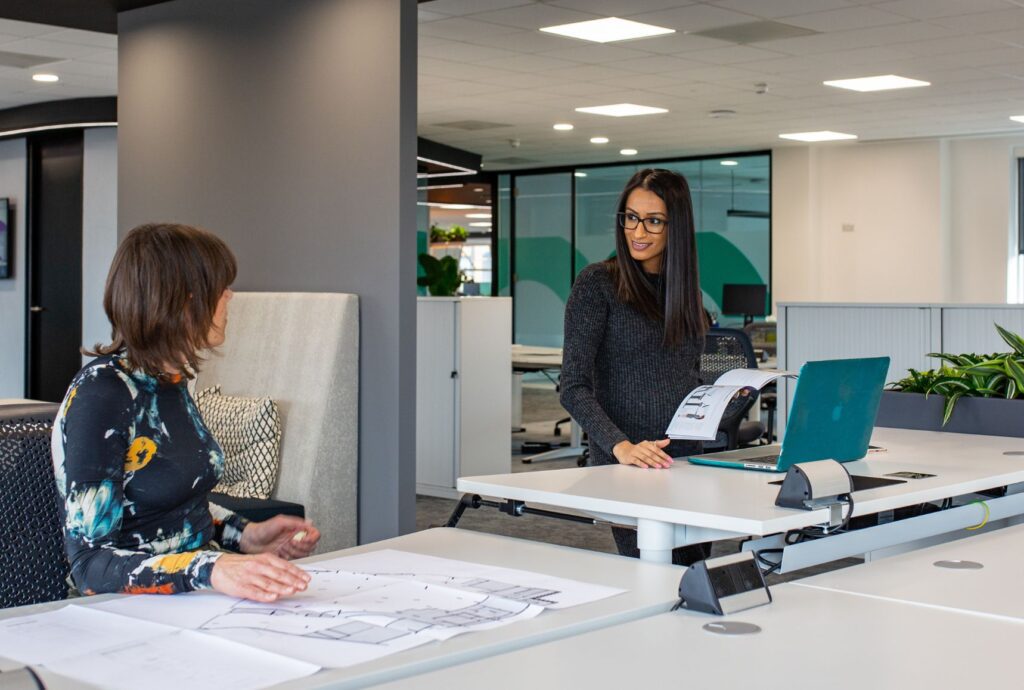
What are some common misconceptions about productivity?
To say that the world of work has changed over the years is quite a staggering understatement. Many of us aren’t hamsters on wheels – our tasks have variety and our work has a conceivable purpose. However, we can’t seem to shake off certain myths about productivity.
Here are some examples that should be consigned to the past:
Productivity is simply about increasing the output of work
This is arguably the most common myth about productivity. Productivity is about delivering high-quality work with meaningful results. A workplace shouldn’t be a place where employees are simply churning out stacks of work without understanding its purpose or significance. This is not only bad for morale, it means people’s unique skills and talents are being wasted. Instead, the focus should be on using resources effectively to create something truly valuable.
Financial incentives are the best way to increase productivity
No one is denying that money is the main reason we go to work each day. That doesn’t mean, however, that we don’t want our work to be meaningful. Any Environmental, Social and Governance (ESG) strategy worth its salt acknowledges that we are at our most productive when we feel that our work has real significance and contributes to a wider goal. It also cannot be overstated how important positive reinforcement and recognition are for productivity. Data taken from Harvard Business Review shows that 40% of Americans would work harder if they were recognised more often. A simple concept, but one some managers need to familiarise themselves with: treat people decently and they’ll be more inclined to do their best.
Remote employees are often less productive than on-site employees
This particular misconception gave rise to concerns following the outbreak of COVID-19, as many employees left their offices to work from home. However, the idea that working remotely hurts productivity cannot be true because if it were, the countless organisations that have embraced it would be like lemmings off a cliff. According to the Office of National Statistics, 52% of working adults believe that they can work faster and with fewer distractions from home, with 47% also reporting their wellbeing had increased since switching to hybrid working.
On-site employees are often less productive than remote employees
The myth works both ways! While this may seem confusing, the point we’re trying to make is that you can’t make blanket statements about productivity and expect them to apply to every single business or work environment. For example, some people have no problem working from home but others find their workplace to be a comfortable, stimulating environment. There’s also the fact that many productivity stats are self-reported, which is a fatal flaw because quite frankly, no one is going to purposely underreport how much they work…
Finally, we need to mention that the switch to remote working has given rise to ‘overemployment’: workers using their increased availability to take on surreptitious side hustles or regular gigs. This adds another important layer to our working understanding of productivity.
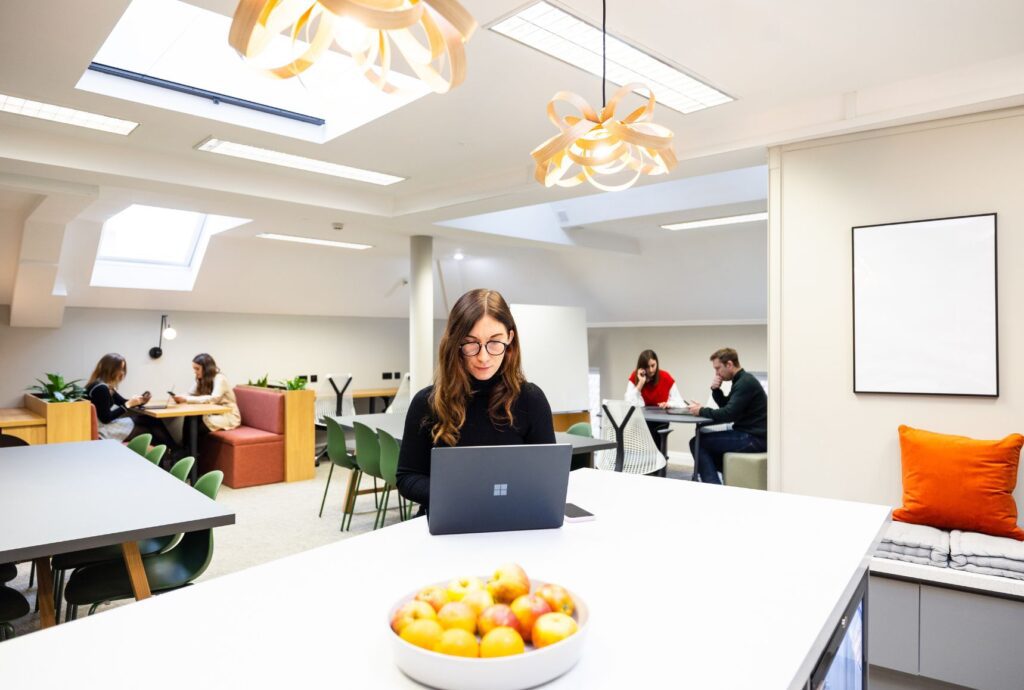
What are the main benefits of increasing productivity in the workplace?
Some of these points have already been briefly mentioned in the article. However, it’s worth refamiliarising yourself with them so you can make a compelling business case for any initiatives you think could increase productivity in your workplace:
Employee engagement
The term ‘employee engagement’ describes how invested an employee is in helping an organisation fulfil its long-term mission – they know how to do their job but also why it matters. A productive workplace empowers employees to do their best and helps them manage their time properly. This then inspires people to actively contribute to an organisation’s core objectives.
Staff retention
Productive workforces tend to have higher morale, as employees have everything they need to do their job and do it well. Of course, morale and staff retention go hand in hand, especially when bolstered by employee rewards and recognition. The reverse is also true: workplaces with low levels of retention tend to be less productive. This is not only because of low morale but also because of the time it takes for new hires to reach full productivity (also known as ‘ramp-up time’).
Financial benefits
Whether you’re allocating resources to personal development and training or new systems and processes, any investment you make in productivity is going to generate returns. Conversely, ignoring workplace productivity wastes time and money as it affects not only the quantity of work being produced but also the overall quality.
End-user satisfaction
Whether it’s an office, a call centre or even an assembly line, the best way to make end-users happy is to deliver products and services quickly and to a high standard. This has a variety of long-term benefits for your organisation, not just increased revenue but also a fantastic reputation amongst your peers and within your target market.
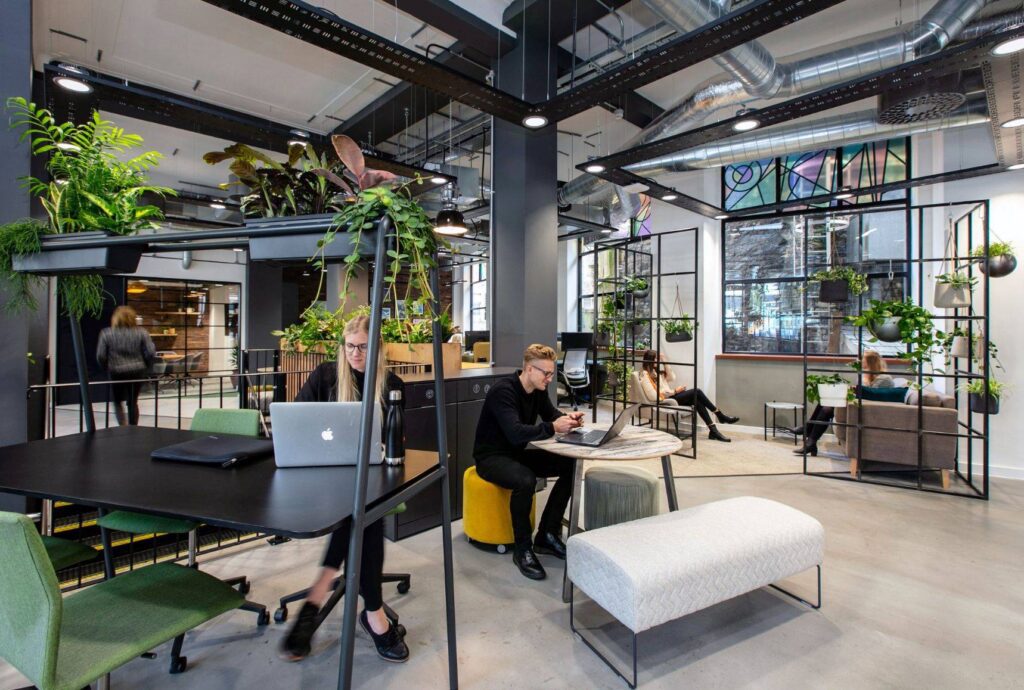
Has the growth in hybrid workplaces affected productivity?
In the midst of COVID-19, there was widespread speculation on whether companies could adjust to hybrid working without seeing a decline in productivity. Again, we must acknowledge that there are no one-size-fits-all solutions. But after some initial upheaval, it’s been found that hybrid working offers multiple benefits for employees:
- A better work/life balance: Hybrid working gives employees more options on how to structure the average workday. By having the option to work from home, teams can schedule meetings around household tasks and responsibilities such as childcare. This is great for employees’ moods and wellbeing and therefore will often increase productivity.
- Higher employee satisfaction: Most employees relish the flexibility and independence that comes with a hybrid working model, and according to a study from Oxford University, happy workers are around 13% more productive. It’s important to remember that lots of people value physical proximity as part of working in a team, but they still want to have the choice and autonomy associated with hybrid working.
- More available time: Hybrid working means that people don’t have to spend a substantial chunk of their day commuting to and from the office (plus getting ready for work and so on). This has resulted in 40% of people working longer hours from home than in the office. While we mentioned that some of this could lead to overemployment, a large number of employees are happy to spend a little extra time finishing up an important task. It’s important to mention, however, that people shouldn’t be encouraged to work late and that longer working hours don’t necessarily mean productivity improves (it can actually have the opposite effect by contributing to employee burnout).
What are some barriers to productivity in the workplace?
Before the benefits of increased productivity can be fully realised, companies must identify any issues that may be preventing workers from doing their best. Realistically speaking, there’s rarely a single cause that can be fixed with a magic bullet solution. That said, the following examples should help you get started:
Insufficient resources and outdated tools
One of the worst things you can do is expect people to do more with less. When you allow your resources to stagnate, don’t expect your productivity to improve or your output to match that of your competitors.
Heard of the Project Management Triangle? It has three key points that have been mapped onto the below Venn diagram: good, fast and cheap. As the rule goes, you can only pick two out of the three. So if you want to save money and get work done fast, don’t expect it to be high-quality. The best course of action is to invest in whatever your team needs to get good work done fast (even if it’s not cheap).
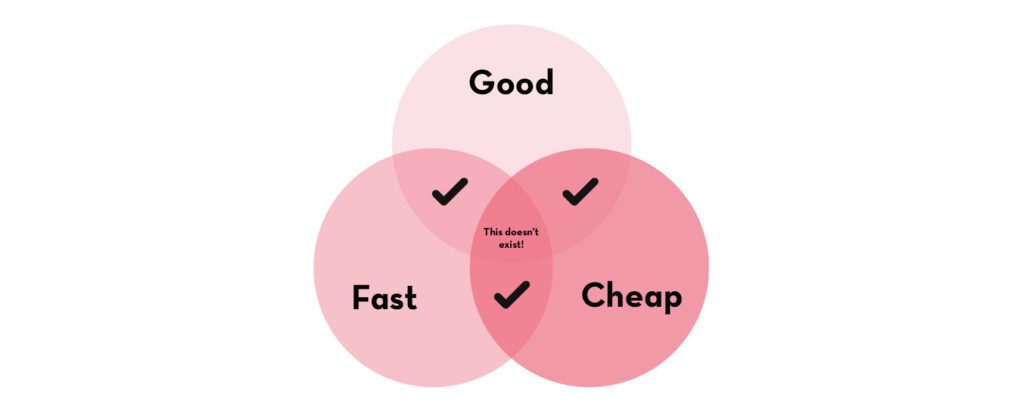
Excessive emails and meetings
Ever been copied into an email for no apparent reason? What about sitting through an hour-long meeting that could have been a five-minute email?
Digital technology pervades every aspect of our lives, and as a result, we often feel as though we have to be constantly available. That friend who expects an instant response to a WhatsApp message? They could also be that boss who’ll ask you to drop whatever you’re doing at that moment to respond to an email or sit in a meeting, and then jump right back into your interrupted task with that same productive mindset as before. Many companies are implementing policies such as ‘Zoom-Free Days’ or ‘silent meetings’ (which have become common at Amazon and Twitter) to help employees focus on their most important tasks, as well as using email notes so people can stay in the loop without drowning in a deluge of emails.
Micromanagement
As a leader, you should remain reasonably attentive to whatever is happening within your team. However, you can’t expect people to get anything done quickly by breathing down their necks.
If you’re a micromanager, you’re essentially showing your employees that you don’t trust them to do their jobs properly. This causes frustration and resentment which in turn drags down morale and retention. Ultimately, you must allow people to do the job you hired them for and nurture their creativity. After all, they may have ideas to improve things but are being overshadowed or stifled by micromanagement.
Low engagement and morale
If productivity is on the decline, it could be because employees aren’t motivated to do their best work, or they aren’t seeing how their work contributes to a wider purpose. Engagement and morale can suffer for a variety of reasons, but common examples include poor management, a lack of recognition and burnout as a result of teams being overworked.
A common misconception not mentioned previously is that low productivity is a result of employees slacking or incompetence. Each member of a team has skills and potential, so instead of blaming individuals for low productivity, it’s likely there are wider issues that need addressing.
How does the workplace affect productivity?
As human beings, our moods and wellbeing are often shaped by our immediate surroundings. Therefore, it makes sense that work environments can have a significant impact on productivity.
When we think about a work environment that’s conducive to productivity, gone are the endless swathes of anonymous cubicles and magnolia walls we see on screen. A thoughtful approach to workplace design means every single detail helps to create an enriching and stimulating environment. Here are some points to consider about office design and productivity:
- Layout: You may be surprised to know that open-plan offices can lower productivity. Typical reasons include a lack of privacy and higher levels of disruption, but open-plan offices also reduce face-to-face interaction by up to 70%. A well-designed office layout allows employees to both concentrate and collaborate when needed.
- Lighting: A poor lighting setup can cause eye strain and headaches, which of course will affect performance and productivity. The most productive workspaces will usually make the most of natural light or adjustable lighting to create a relaxed but focused atmosphere.
- Temperature and Ventilation: If a workspace is stuffy, too hot or too cold it creates a stifling environment. A survey conducted by CareerBuilder revealed that 53% of employees are less productive when workspaces are too cold. Workspaces should have a continual flow of fresh air and regulated temperatures to keep everyone comfortable.
- Noise: This is one of the biggest distractors in the workplace, be it from phones, conversations amongst employees or even excessively loud typing. This isn’t to suggest that workplaces should be completely noise-free, which is unrealistic. Instead, they should include dedicated ‘quiet areas’ where employees can go if they’re feeling distracted or need to focus.
- Colour: There is a growing body of evidence that colour affects the way we work. This has roots in ‘colour psychology’, and was first tested in prisons where studies found painting walls pink reduced aggression. In our guide to workplace colour and productivity, we point out that 80% of UK office workers believe colour impacts their mood, so the impact of a fresh lick of paint cannot be underestimated.
- Workstations: Are you expecting your employees to adjust to an existing set-up, or are you designing workstations with consideration to each person’s needs and requirements? This could mean opting for a standing desk, footrests or additional monitor support. Ideally, employees should be able to tailor their setup to how they work best. This will have a positive long-term impact on both productivity and employee wellbeing.
Get in touch
At Interaction, we think the best workplace strategies are built on a desire to create an engaged, happy and energised workforce. This means employees are contributing to a vision that inspires them, they’re collaborating with people who share their values, and they’re fully equipped to do their job to the best of their ability. Does this sound like your ideal workplace? If so, get in touch with Interaction and let us bring your vision to life.
To find out more about who we are and what we can offer you, you can Chat with Charlie or call us on 01225 485 600 to speak to a member of our team.
